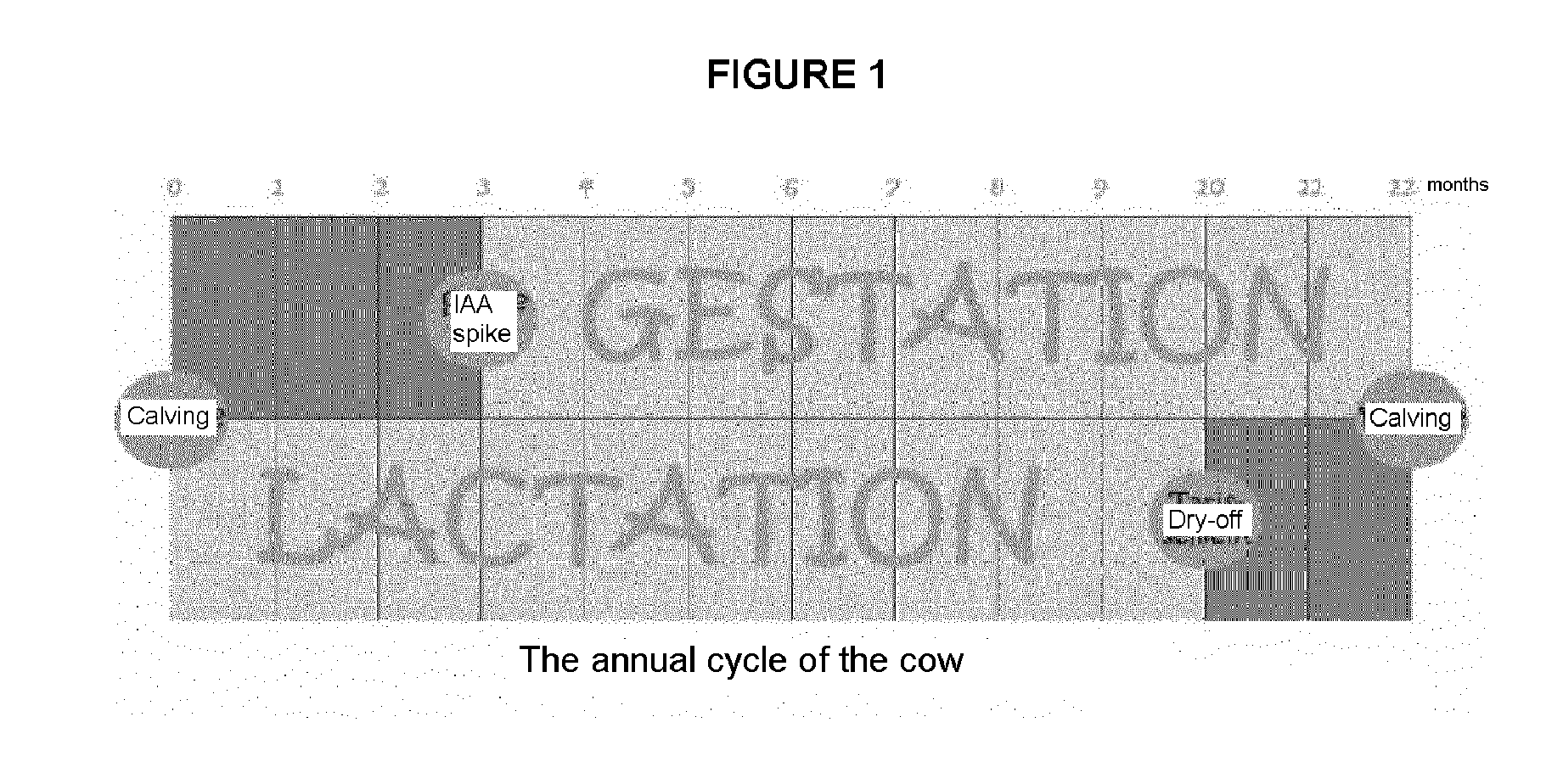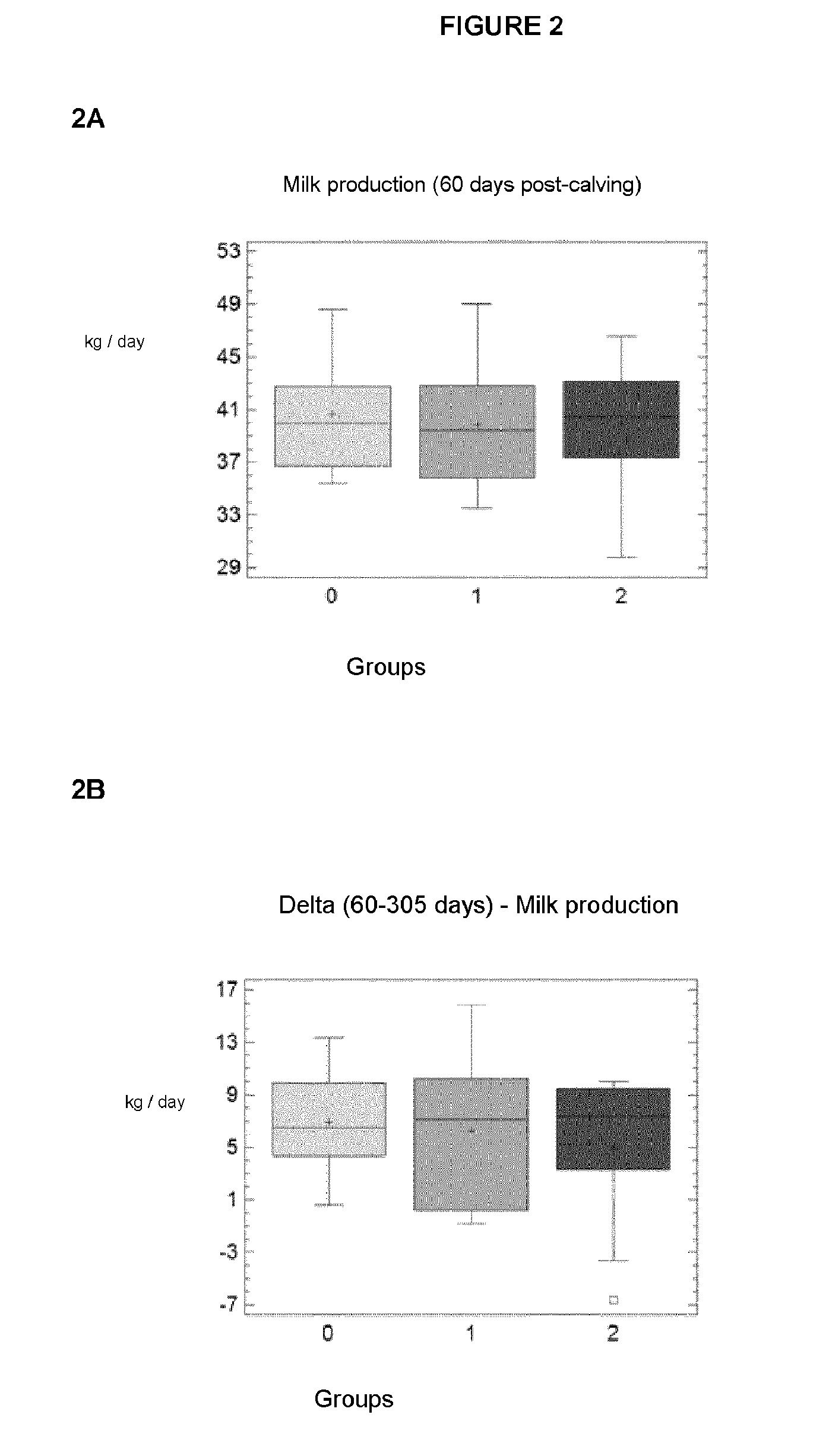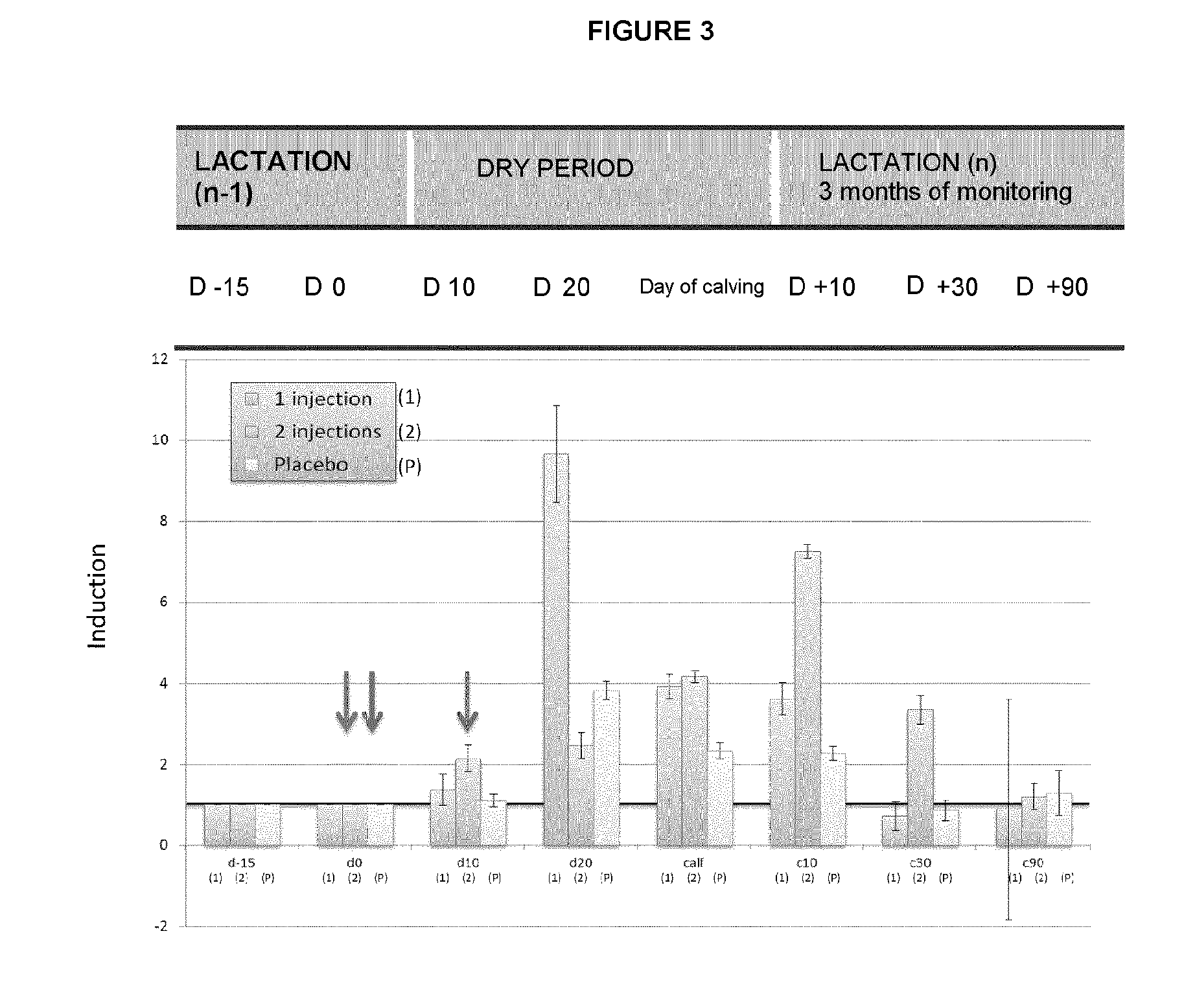Veterinary Anti-prolactin composition for ruminants
a technology of prolactin and composition, which is applied in the field of veterinary composition, can solve the problems of reducing stomach capacity and absorption, affecting the immune status and/or and causing numerous physiological disturbances, so as to prevent the deleterious effects, reduce the deleterious effects, and improve the immune status and/or the hepatic functions of ruminants
- Summary
- Abstract
- Description
- Claims
- Application Information
AI Technical Summary
Benefits of technology
Problems solved by technology
Method used
Image
Examples
example 1
Preparation of Cabergoline-Based Veterinary Compositions
[0063]Preparation of 9 liters of a preparation for injectable solution containing 500 ng / ml of cabergoline.
Formula:
[0064]Active ingredient: 4.53 g of cabergoline (titer 100%)[0065]Excipient: medium-chain triglycerides q.s. 9 liters.
Step 1:
[0066]4.53 g of cabergoline and 1.5 kg of medium-chain triglycerides were measured in a container of suitable capacity, and then the mixture was stirred using a magnetic stirrer (500 rpm) for at least 60 minutes for complete dissolution.
Step 2:
[0067]In a dry container, 5 kg of medium-chain triglycerides were measured, the nitrogen stream and stirrer turned on, and then cabergoline in concentrated solution, obtained in step 1, was added to the container. Stirring was maintained for 30 minutes and then the volume was brought up to the final volume of 9 liters by adding medium-chain triglycerides. Stirring was maintained for 30 minutes more and then the solution was filtered under pressurized nit...
example 2
Demonstration of the Absence of Deleterious Effects on Milk Production in Dairy Cows Treated with Cabergoline-Based Veterinary Compositions
[0068]This study aims to evaluate the effectiveness of cabergoline-based veterinary compositions in primiparous (n=17) or multiparous (n=54) Prim'Holstein dairy cows, in lactation and at 8 months gestation during the administration, in reducing the duration of the dry period to 1 month. The dairy cows are housed in a cowshed according to current breeding conditions.
[0069]The experiment comprises 3 groups of cows:[0070]the control group (n=24 cows) which receives two administrations of placebo at D0 (beginning of the dry period by dry-off) and at D10 (10 days after D0);[0071]the C646-1 group (n=23 cows) which receives a single dose of cabergoline-based veterinary composition at D0;[0072]the C646-2 group (n=24 cows) which receives two doses of cabergoline-based veterinary composition at D0 and then at D10.
[0073]The cabergoline-based veterinary comp...
example 3
Study of the Effectiveness in Dairy Cows of Cabergoline-Based Veterinary Compositions
[0081]The three groups of cows treated as described in Example 2 undergo the following examinations and samplings:[0082]Daily general clinical monitoring:[0083]Appearance of diseases (metabolic, infectious, etc.);[0084]All abnormal signs are noted, notably such as abortions, as well as any difficulties during calving. The animals are followed until being dropped in order to evaluate the state of health of the newborn calves.[0085]Blood samples are taken at D0, D10, D20, C0 (calving=D30), C10, C30 and C90.[0086]These samples enable us to assay by PCR notably the prolactin receptors considered to be markers of animal health,[0087]Colostrum (IgG) assay at C0[0088]Counts of somatic cells in milk produced at C30, C60 and C90.
[0089]The results observed reveal that the reduction of the duration of the dry period is expressed notably by increased expression of the long form of prolactin receptors in the C64...
PUM
| Property | Measurement | Unit |
|---|---|---|
| volume | aaaaa | aaaaa |
| time | aaaaa | aaaaa |
| size | aaaaa | aaaaa |
Abstract
Description
Claims
Application Information
 Login to View More
Login to View More - R&D
- Intellectual Property
- Life Sciences
- Materials
- Tech Scout
- Unparalleled Data Quality
- Higher Quality Content
- 60% Fewer Hallucinations
Browse by: Latest US Patents, China's latest patents, Technical Efficacy Thesaurus, Application Domain, Technology Topic, Popular Technical Reports.
© 2025 PatSnap. All rights reserved.Legal|Privacy policy|Modern Slavery Act Transparency Statement|Sitemap|About US| Contact US: help@patsnap.com



